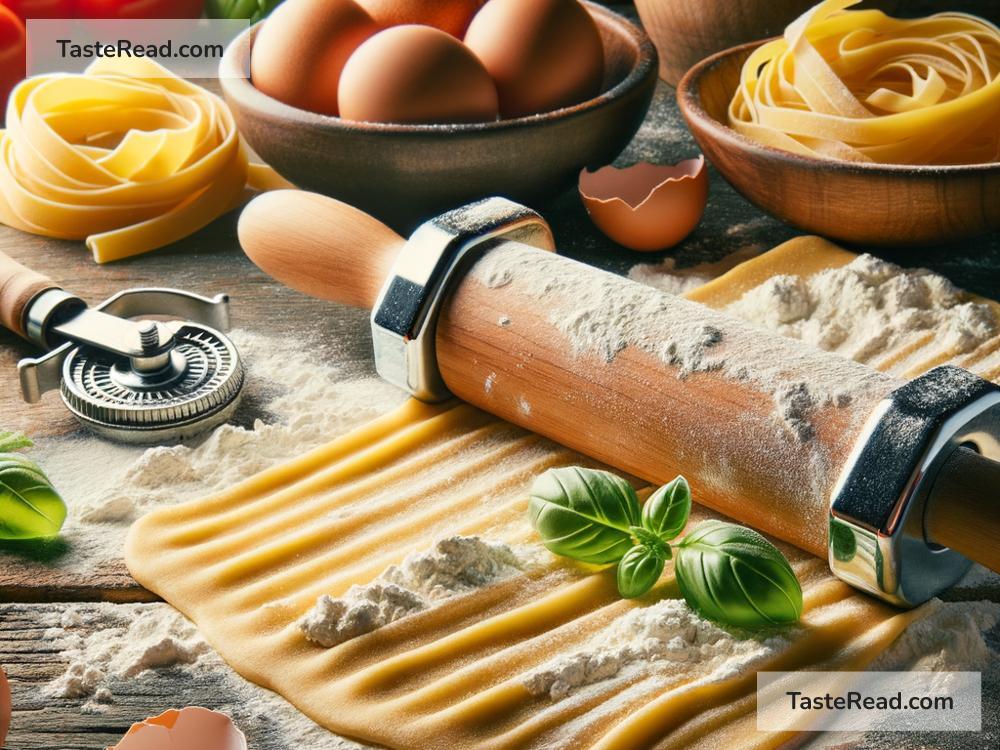How to Make Homemade Pasta: A Simple Step-by-Step Guide
Making pasta from scratch is a fun and rewarding kitchen adventure. Homemade pasta tastes fresher than store-bought varieties and brings a touch of magic to your meals. Plus, it’s surprisingly easy to make with just a few basic ingredients. Whether you want to impress your friends at dinner parties or simply enjoy fresh pasta at home, this guide will show you how to make it step by step.
What You’ll Need
Before you get started, gather these simple ingredients and tools:
Ingredients:
– 2 cups all-purpose flour (or you can use semolina flour for a firmer texture)
– 3 large eggs
– A pinch of salt
– Optional: 1 tablespoon olive oil (for added richness)
Tools:
– A clean surface (like a countertop or a large cutting board)
– Rolling pin (or pasta machine, if you have one)
– Knife or pizza cutter (to cut the pasta)
– Fork
– Mixing bowl
– Clean kitchen towel
Step 1: Prepare the Dough
-
Place the flour on your surface: Start by measuring out your flour and pouring it onto a clean countertop or large cutting board. Make a mound of flour and use your fingers to create a small well in the center. (If you prefer, you can do this in a bowl!)
-
Add eggs to the well: Crack the eggs into the center of the well. Sprinkle a pinch of salt over the eggs. If using olive oil, pour it in now.
-
Mix gradually: Using a fork, gently whisk the eggs, slowly incorporating the flour from the edges of the well. At first, it might look messy, but don’t worry—it will come together!
-
Form the dough: Once the mixture becomes too thick to whisk, use your hands to start kneading the dough. Bring all the flour together and press it into a ball.
Step 2: Knead the Dough
-
Knead for about 8–10 minutes: Firmly press the dough with the heel of your hand, fold it over itself, and turn it. Repeat the process. The dough should become smooth and elastic over time. If it feels too sticky, sprinkle a little extra flour. If too dry, add a tiny bit of water.
-
Let it rest: Once kneaded, wrap the dough in plastic wrap or cover it with a clean kitchen towel. Let it sit at room temperature for 20–30 minutes. Resting makes the dough easier to roll and shape.
Step 3: Roll Out the Dough
-
Divide the dough: After resting, cut the dough into two or three smaller pieces. This makes it easier to work with.
-
Flatten the dough: Lightly sprinkle your work surface and rolling pin with flour to prevent sticking. Start rolling out one piece of dough, applying gentle, even pressure. Rotate the dough to keep it round or oval-shaped.
-
Thin it out: Keep rolling until the dough is very thin—about 1/16th of an inch thick. If you’re using a pasta machine, start on the widest setting and gradually work down to thinner settings.
Step 4: Shape the Pasta
Now comes the fun part: turning your dough into pasta noodles! You can make different shapes, depending on what you want to cook:
- Fettuccine or tagliatelle: Use a knife or pizza cutter to slice the rolled-out dough into long strips (about ¼ inch wide).
- Spaghetti: Use a pasta machine with a spaghetti attachment or slice thinner strips.
- Ravioli: Place small mounds of filling (like cheese or spinach) on one sheet of pasta, cover with another sheet, and press around the edges. Cut into squares.
- Pappardelle: Cut wider strips (about 1 inch wide).
Once your pasta is cut, dust the noodles lightly with flour to prevent sticking.
Step 5: Cook the Pasta
-
Boil water: Bring a large pot of water to a boil and add a generous pinch of salt.
-
Cook for 2–3 minutes: Fresh pasta cooks much faster than dried pasta. Drop the noodles into the boiling water and cook until tender. Taste to make sure they’re done but still slightly firm (al dente).
-
Drain and serve: Gently drain the cooked pasta and serve it right away with your favorite sauce or toppings.
Extra Tips for Success
- If you’re new to pasta-making, start simple with flat noodles like fettuccine or tagliatelle. Shapes like spaghetti or ravioli require extra tools or practice.
- Don’t rush the kneading process! It’s key to achieving smooth, elastic dough.
- If making a big batch, you can freeze extra pasta dough or raw noodles for later use. Just dust noodles with flour, store in airtight containers, and freeze.
- Experiment with flavors! You can add spinach puree to the dough for green pasta or beet puree for a pink version.
Why Homemade Pasta Is Worth It
Sure, store-bought pasta is convenient, but making your own is truly special. You can customize the thickness, shape, and even the flavor. It’s also an opportunity to bond with family in the kitchen. Once you try homemade pasta, you’ll appreciate the effort, taste, and joy it brings.
Go ahead—put on your apron and start your pasta-making journey today. You’ll get delicious, fresh pasta and a proud “I made this!” moment. Happy cooking!


